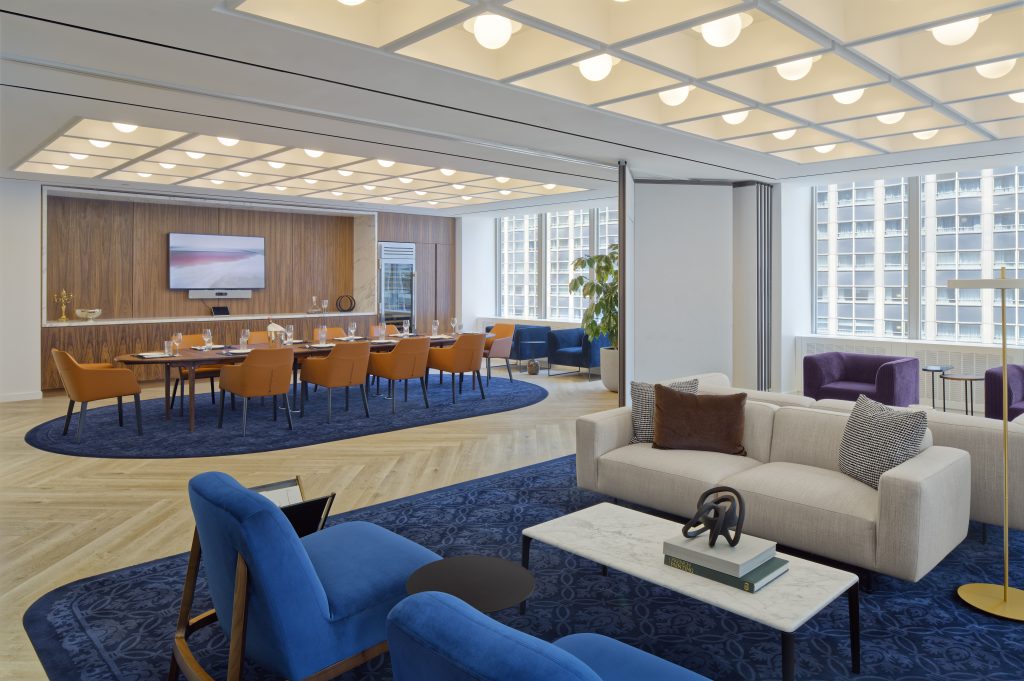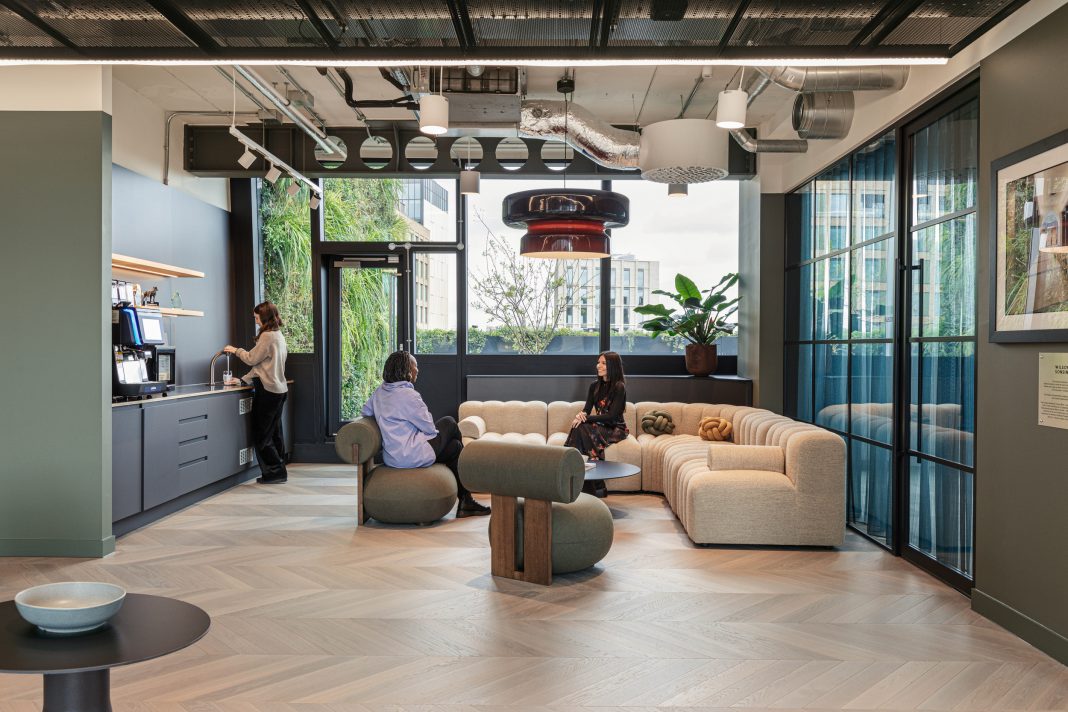M Moser Associates Director, Sam Farhang, discusses how to design for a culturally optimistic future in the rapidly changing workplace.
Strengthening Resiliency through Design
Before we dive into how design can support cultural optimism and resiliency, we must define what we mean by these terms and explain why they are essential in workplace design today.
Optimism is rooted in hopefulness about the future and successful outcomes, while resilience is the process and outcome of successfully adapting to difficult or challenging life experiences. Therefore, cultural optimism and resilience must involve a collective’s ability to adapt and thrive in the face of challenges, stressors or adversities — whether that collective be a business, a community or an entire society.
Cultural optimism within a company’s workplace can manifest as a shared belief among employees in the potential for future success and growth, encouraging innovation and a proactive approach to challenges.
On the other hand, cultural resilience equips an organization to effectively navigate setbacks or market changes by leveraging collective strengths, traditions and shared values. Together, these qualities help maintain morale, drive engagement and ensure that the organization survives difficult periods and emerges stronger and more unified.
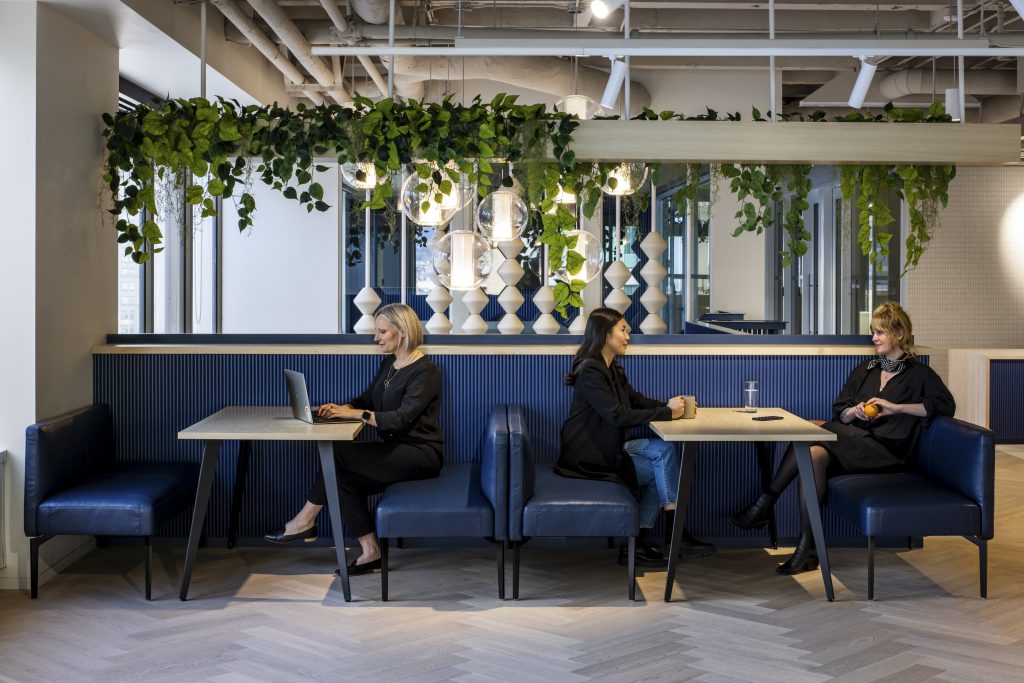
Key Strategies for a Rapidly Changing World
We started experiencing an unprecedented rate of change in business long before the pandemic. We’re seeing this continue post-pandemic, but now it’s also paired with the uncertainty of what the “future” office means for businesses and employees. This combination of continued change and uncertainty is what’s driving the need for designs that provide a new level of resiliency.
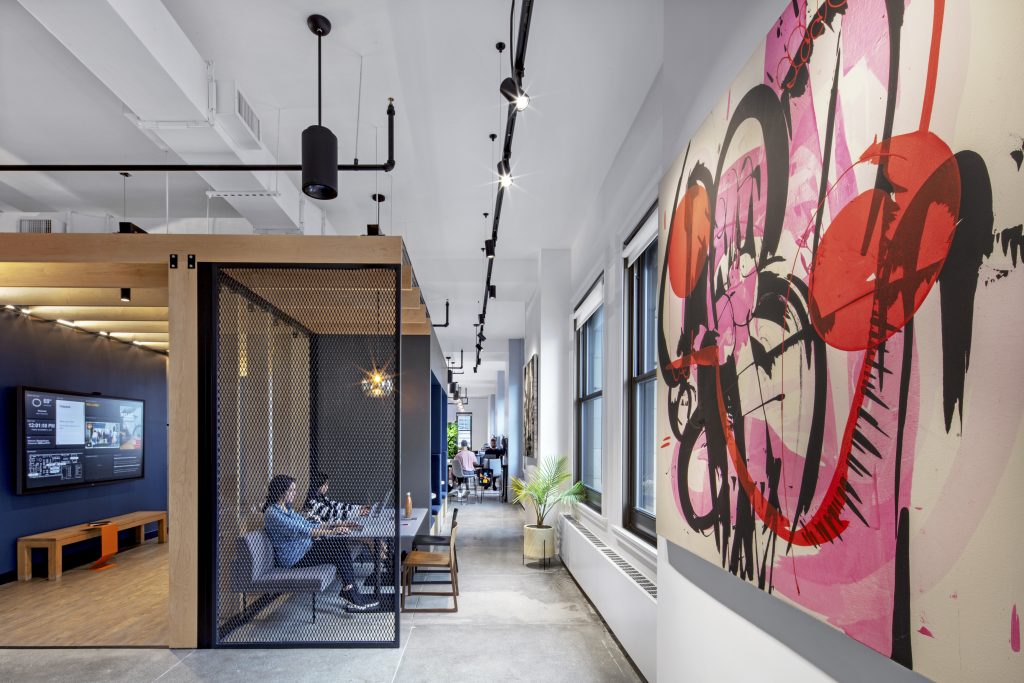
The nature of work environments changes rapidly—so rapidly that by the time the workplace is designed, constructed and ready for use, it may already be outdated due to the fast pace of technological advancements and evolving business and work practices. So, the days of designing these “fixed” work environments lasting 5- 10 years are long gone.
It’s time to reconsider the design of workplaces to ensure they remain relevant and functional when completed, rather than becoming solutions for the past.
Designing for resiliency starts with the understanding that needs will change. However, by establishing clear frameworks, final solutions can provide the ability to adapt through a balanced approach that considers functionality, human-centric principles and business needs. Let’s explore a few key strategies for designing spaces that support cultural optimism and resilience.
Designing for People
At their core, the spaces we build are for people. Designing for people means creating spaces that not only fulfill a complex tapestry of needs and wants but also enhance the ease of navigation and usability. These elements are crucial as they significantly influence the overall brand experience, projecting an image of accessibility and user-friendliness that resonates with a company’s values.
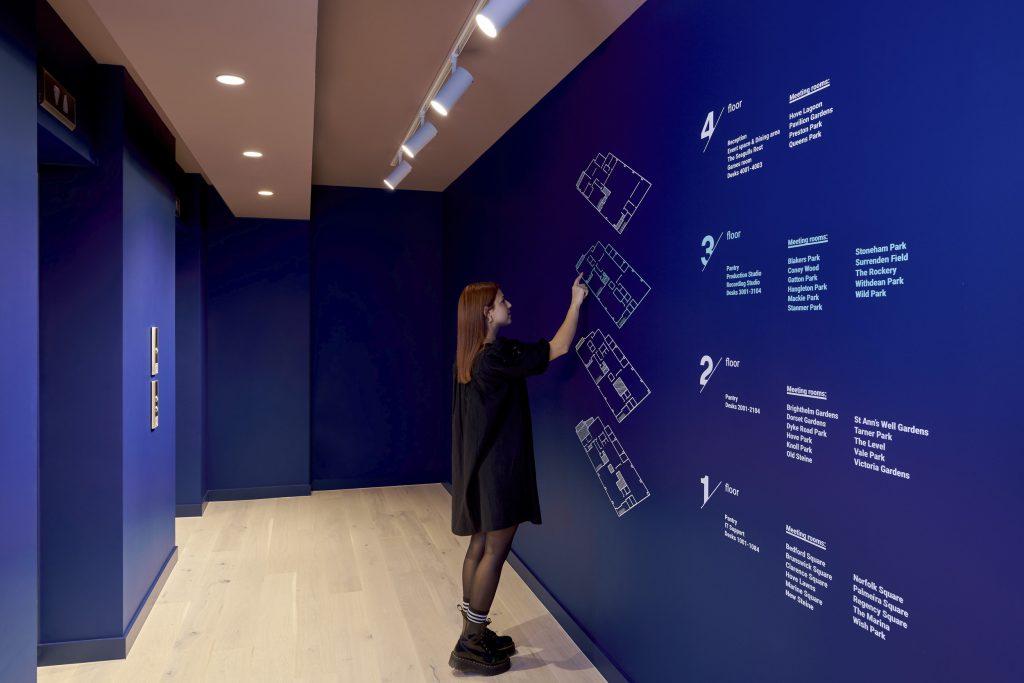
When a workspace is easy to navigate, it reduces stress and saves time, allowing people to focus more on collaborating and connecting more with colleagues rather than finding their way around. Similarly, user-friendly design features — such as intuitive layouts, clear wayfinding signage and interactive technology solutions — ensure that all individuals, regardless of their level of ability or neurodivergence, can use the space effectively and comfortably.
Additionally, incorporating considerations for health and wellbeing, including ergonomic designs that prevent strain and injury, and inclusivity for a diverse workforce, provides additional benefits to the workplace experience. These design choices convey a message that the brand cares about its employees’ comfort and health, which can attract and retain top talent while supporting a positive public perception.
Designing for Change
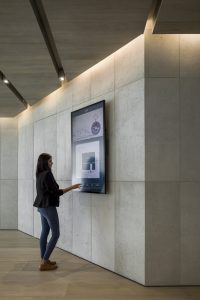 As noted earlier, business needs and organizational structures evolve over time. Consequently, workplace design must accommodate these changes with increased flexibility and adaptability. While solutions such as modular components, multifunctional spaces, and movable walls and partitions offer straightforward benefits, the critical role of data in driving spatial changes is often overlooked.
As noted earlier, business needs and organizational structures evolve over time. Consequently, workplace design must accommodate these changes with increased flexibility and adaptability. While solutions such as modular components, multifunctional spaces, and movable walls and partitions offer straightforward benefits, the critical role of data in driving spatial changes is often overlooked.
The integration of digital twins in workplace design is essential. By creating a digital twin—a virtual model of the physical space—designers and end-users can access real-time data that informs and enhances decision-making processes.
This approach ensures that modifications to the workspace are not based merely on assumptions or desires but are supported by data-driven insights. This data-centric strategy enables a more responsive, efficient and tailored adaptation to changing needs, thereby enhancing workplace environments’ overall effectiveness and sustainability.
Designing for Behaviors
Change in the workplace doesn’t always equate to adapting physical spaces; it also involves accommodating evolving behaviors. With the permanence of hybrid work models, designing environments that ensure an equitable experience for in-person and remote team members is crucial. This requires careful consideration of how these diverse working arrangements intersect and influence daily operations.
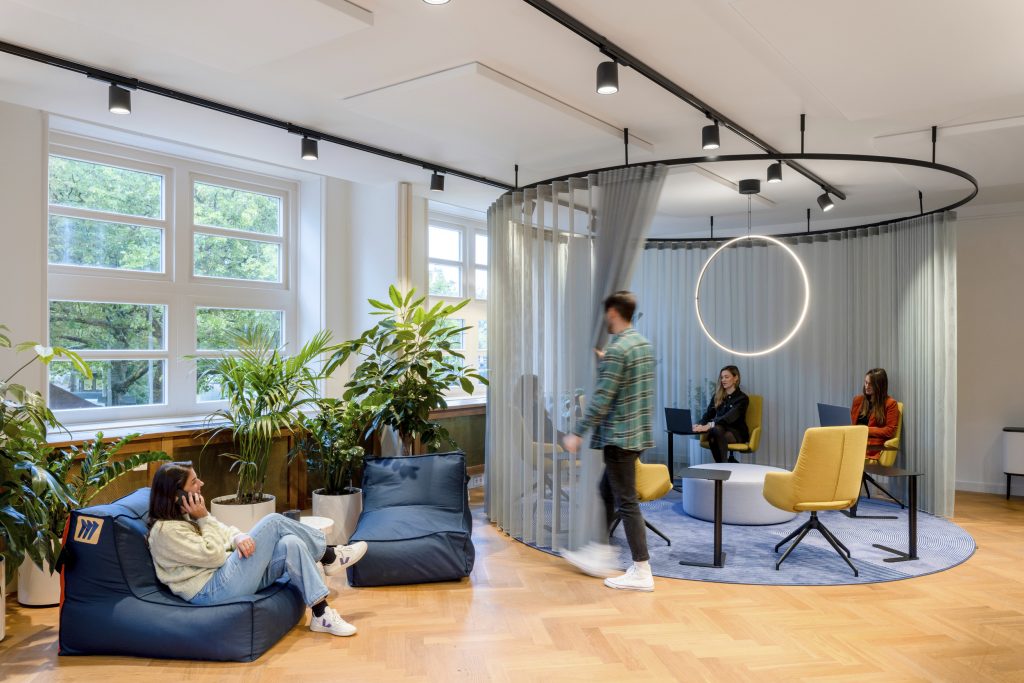
Additionally, establishing rituals that support both collaborative and focused work can enhance productivity and ensure that all team members, regardless of their location, are included effectively in team dynamics.
Beyond physical design, supporting a culture that prioritizes mental and physical wellbeing is vital. This involves more than symbolic gestures; it requires genuine, sustained efforts to promote health and wellness within the organization.
 Transparency and openness are also essential, both in the physical layout—with elements like glass partitions to cultivate an open atmosphere—and at the organizational level. An inclusive, transparent environment counters the adverse effects of siloed, exclusionary practices and promotes employee optimism and collaboration.
Transparency and openness are also essential, both in the physical layout—with elements like glass partitions to cultivate an open atmosphere—and at the organizational level. An inclusive, transparent environment counters the adverse effects of siloed, exclusionary practices and promotes employee optimism and collaboration.
Envisioning a Resilient, Optimistic Future
Designing resilient workplaces surpasses traditional architectural or design considerations, tapping into a profound understanding of human and organizational behavior. So, as we forge ahead in an era marked by unprecedented changes and uncertainties, the emphasis must shift from static designs to dynamic, adaptable environments that cater to the evolving needs of businesses and their employees.
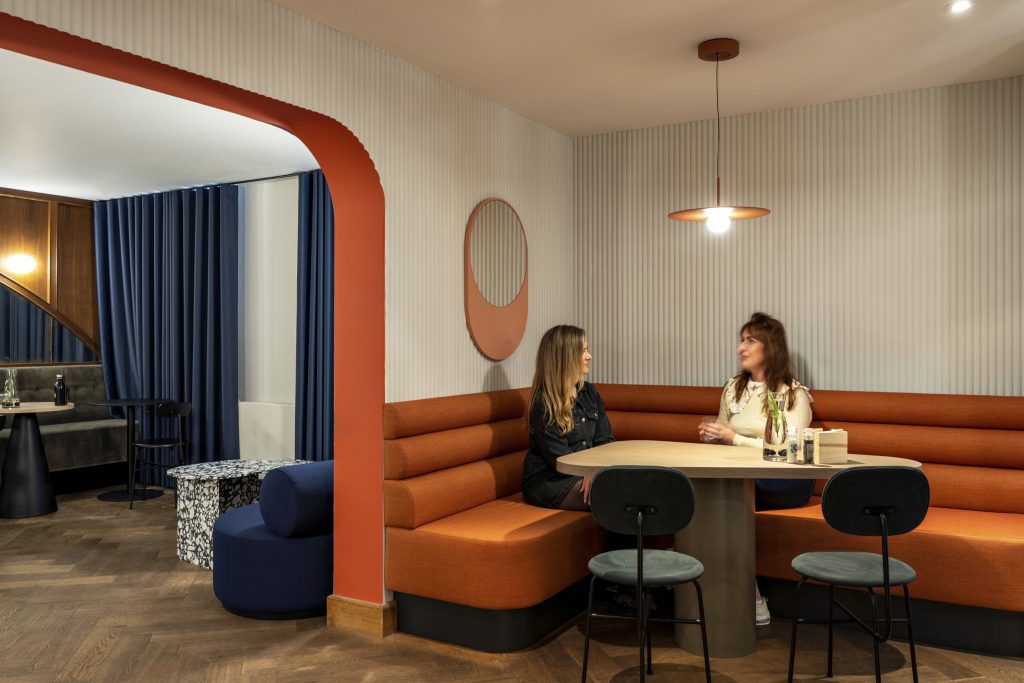
By incorporating flexibility, data-driven insights, and a commitment to inclusivity and wellbeing, we enhance the physical spaces and nurture a culture of resilience and optimism.
This holistic approach not only ensures that work environments keep pace with technological and societal shifts but also positions organizations to thrive in the face of future challenges. All in all, resilient design is not merely about creating spaces that endure; it’s about envisioning a built environment that can empower, inspire and evolve with its inhabitants.
Images courtesy of M Moser Associates.
Want to read more from experts at M Moser Associates? Check out:
Aligning a NYC Financial Office with their Global Workplace Initiative
